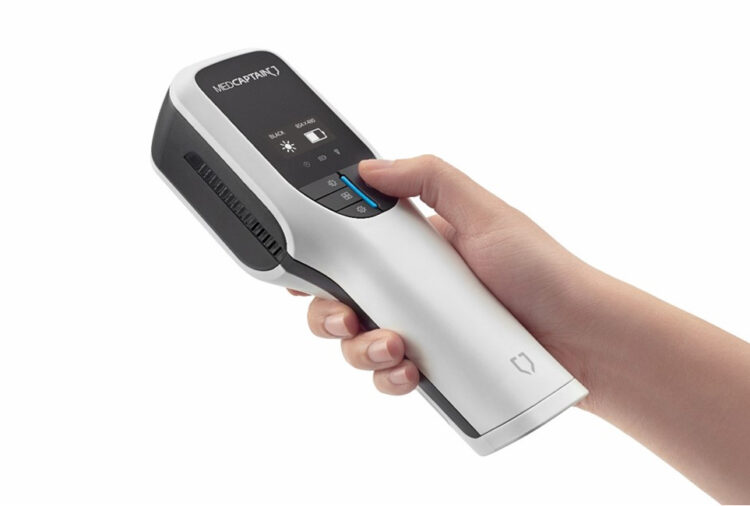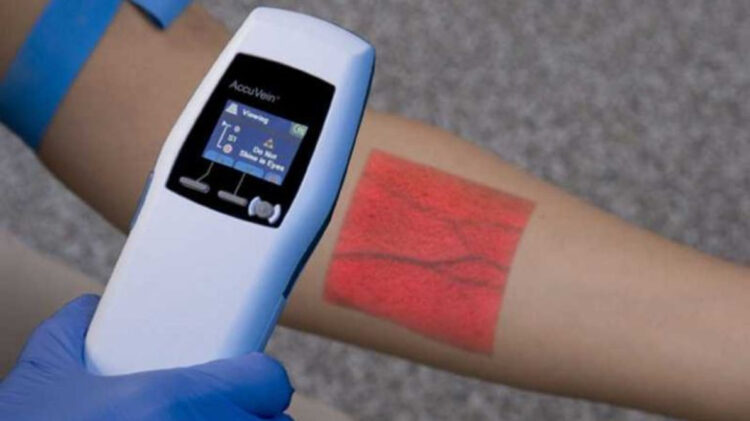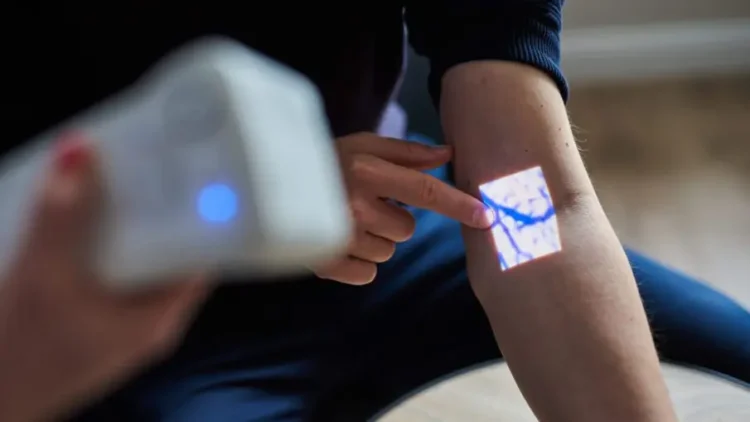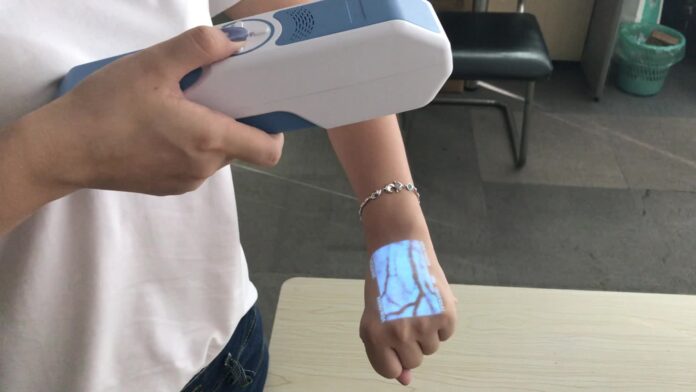A vein finder is a device that helps locate veins for intravenous access. It is most commonly used in hospitals and clinics for procedures such as drawing blood or administering fluids or medications intravenously.
However, there are many other potential applications for this technology. Here, we will explore some of the ways in which a vein finder can be used to improve patient care.
What is a Vein Finder and How It Works
A vein finder works by emitting a beam of infrared light into the skin. This light is absorbed by the hemoglobin in the blood, which causes the blood vessels to expand slightly. This expansion makes the veins more visible beneath the skin’s surface.
The vein finder then uses a camera to take pictures of the veins. These pictures are displayed on a screen or on the patient’s skin, which allows the operator to see the veins and choose the best one for the procedure.
Types of Vein Finders

There are two main types of vein finders: near-infrared (NIR) and short-wave infrared (SWIR). NIR vein finders use light with a wavelength of 850 nm to 950 nm. SWIR vein finders use light with a wavelength of 1,300 nm to 1,700 nm.
- NIR vein finders are less expensive than SWIR vein finders and can be used on all skin tones. However, NIR devices are not as accurate as SWIR devices and can sometimes have difficulty penetrating dark skin.
- SWIR vein finders are more expensive than NIR devices but are more accurate and can be used on all skin tones.
Both vein-finding technologies are safe and easy to use, and they can be very helpful in situations where intravenous access is difficult to obtain.
Benefits of Using Vein Finder Technology
There are many benefits of vein finder technology, both for patients and healthcare providers.
For patients,
- Vein finder technology can minimize discomfort and bruise during venipuncture procedures.
- In addition, vein finder technology can help ensure that needles are inserted into veins in just the right spot, which minimizes complications and speeds up healing time after a blood draw.
For healthcare providers,
- Vein finder technology can improve accuracy during venipuncture procedures and decrease procedure time.
- In addition, healthcare providers can use vein finder technology to safely draw blood from patients who have difficult-to-find veins.
Who can benefit From a vein Finder | Uses and Applications

There are many different groups of people who can benefit from a vein finder. Some of these include:
The Ones with Difficult-to-Find Veins
One group of people who can benefit from the use of a vein finder is those with difficult-to-find veins. This includes people who are obese, have dark skin, or have scar tissue from previous intravenous procedures. In these cases, a vein finder can help locate a suitable vein for injection.
Those Who Require Multiple Intravenous Procedures
Another group of people who can benefit from the use of a vein finder is those who require multiple intravenous procedures. If a patient needs to have multiple IVs over the course of their treatment, a vein finder can help avoid repeated needle sticks in the same area. This can reduce both pain and the risk of infection.
People in Emergency Situations
Finally, vein finders can also be used in emergency situations when time is of the essence. For example, if someone has suffered a serious injury and needs immediate medical attention, a vein finder can help paramedics quickly locate a suitable vein for injection so that they can administer lifesaving medications as quickly as possible.
FAQs

1. How can you tell if a vein finder is a right choice for you?
There are several factors to consider when deciding whether or not to use a vein finder, including your medical needs and the skill of the healthcare provider using the device.
2. Does a vein finder always provide accurate results?
No, a vein finder is not always 100% accurate. In some cases, the device may have difficulty penetrating certain types of skin or may not accurately detect certain veins. Additionally, there can be individual variation in how well a vein finder works for different people.
3. How do you use a vein finder?
Depending on the specific device and type of application, using a vein finder may involve holding the device against the patient’s skin while it emits light, or using a hand-held probe to scan the patient’s skin for veins.
4. Can you use a vein finder on children?
Yes, many types of vein finders can be used on children. However, it is important to work with a qualified healthcare provider who is experienced in using vein finders on children to ensure the procedure is performed safely and accurately.
5. Are there any risks associated with using a vein finder?
No, there are no known risks associated with using a vein finder. However, it is important to consult with your healthcare provider and follow their instructions carefully to minimize the risk of complications. And I’ve been using Go 2.0 Vein finder by Aimvein and I didn’t feel any side effects or feel fear of being it risky.
Conclusion:
Vein finders are devices that emit infrared light to visualize veins beneath the skin. They are most commonly used in hospitals and clinics for procedures such as drawing blood or administering fluids or medications intravenously.
However, there are many other potential applications for this technology. In this article, we have explored some of the ways in which a vein finder can be used to improve patient care.
If you think you or someone you know could benefit from the use of a vein finder, talk to your doctor or other healthcare providers about whether this technology could be right for you.







